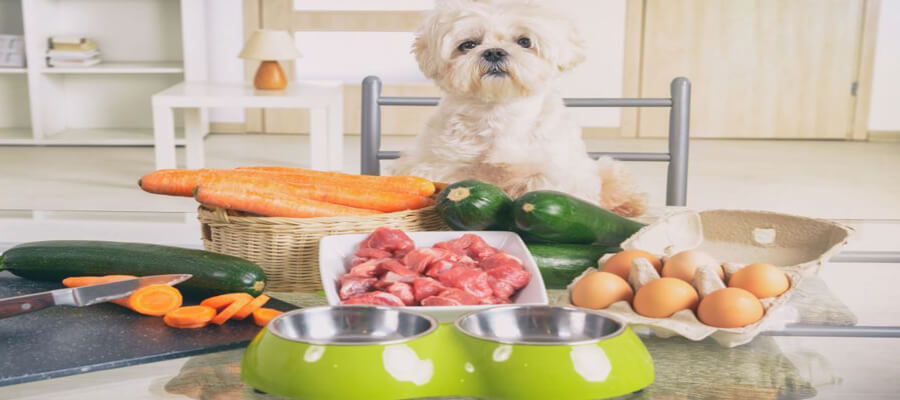
How to Choose the Best Raw Food Diet for Dogs
Choose the Best Raw Food Diet for Dogs
Introduction
Switching your dog to a raw food diet can be a rewarding choice that promotes health and vitality. Raw feeding mimics the natural diet of dogs, emphasizing whole, unprocessed foods. However, selecting the right raw food diet for your canine companion requires careful consideration. This guide will help you understand the benefits of raw feeding, key components to look for, and tips for transitioning your dog to a raw diet.
Understanding the Benefits of a Raw Food Diet
-
Improved Digestion
Raw diets are often easier for dogs to digest, leading to better nutrient absorption and healthier stools. Many owners report reduced gas and fewer digestive issues when switching to raw. -
Healthier Skin and Coat
Raw food diets can enhance the quality of your dog’s skin and coat, reducing the likelihood of allergies and skin irritations. Ingredients rich in omega fatty acids promote a shiny, healthy coat. -
Increased Energy Levels
Many dogs exhibit higher energy levels and improved overall vitality after transitioning to a raw food diet. The high protein content provides the energy they need for an active lifestyle. -
Better Weight Management
Raw feeding can help maintain a healthy weight by providing lean protein sources and natural fats, reducing the risk of obesity-related health issues. -
Enhanced Dental Health
Chewing raw bones and meaty foods can help remove plaque and tartar buildup, leading to better oral health and fresher breath.
Key Components of a Raw Food Diet
When choosing a raw food diet for your dog, it’s essential to ensure that it’s nutritionally balanced. Here are the key components to consider:
Essentials for Your Newly Adopted Pet
Welcoming a shelter pet into your life is a beautiful journey. Here are some handpicked items to help your new friend feel safe, loved, and right at home:
-
Protein Sources
Raw diets typically consist of raw meat, organs, and bones. Look for high-quality protein sources such as chicken, beef, lamb, or fish. Ensure that at least 70-80% of your dog’s diet is made up of these protein sources. -
Variety of Proteins
Include a variety of protein sources to provide a broader spectrum of nutrients. Rotating proteins helps avoid potential allergies and keeps meals interesting for your dog. -
Organ Meats
Organ meats, such as liver and kidneys, are nutrient-dense and should make up about 10-15% of your dog’s raw diet. They provide essential vitamins and minerals not found in muscle meat. -
Bones
Raw, meaty bones are an important part of a raw diet, providing calcium and promoting dental health. Avoid cooked bones, which can splinter and pose choking hazards. Consult your veterinarian for safe bone options. -
Fruits and Vegetables
While dogs are primarily carnivorous, adding small amounts of fruits and vegetables can enhance their diet with fiber, vitamins, and antioxidants. Safe options include carrots, blueberries, and pumpkin. -
Supplements
Depending on your dog’s specific needs, you may want to add supplements such as fish oil, probiotics, or vitamins to ensure a balanced diet. Consult your veterinarian before introducing supplements.
Tips for Transitioning to a Raw Food Diet
Switching your dog to a raw food diet should be done gradually to minimize digestive upset. Here’s how to make the transition smoother:
-
Start Slowly
Begin by mixing a small amount of raw food with your dog’s current diet. Gradually increase the raw portion over a week or two, allowing their digestive system to adjust. -
Monitor Your Dog’s Response
Pay close attention to how your dog reacts to the new diet. Look for any signs of digestive upset, changes in stool consistency, or adverse reactions. If issues arise, slow down the transition process. -
Consult with a Veterinarian
Before making significant dietary changes, consult your veterinarian, especially if your dog has existing health issues. They can provide guidance on appropriate protein sources and ensure your dog’s nutritional needs are met. -
Experiment with Different Recipes
If you’re making homemade raw food, experiment with different protein sources and recipes to find what your dog enjoys most. Keep track of what works best for their taste and health. -
Consider Pre-Made Raw Options
If you’re unsure about preparing raw food yourself, consider high-quality pre-made raw diets available at pet stores or online. Ensure they meet AAFCO standards for complete and balanced nutrition.
Safety Considerations for Raw Feeding
While raw feeding offers many benefits, it’s essential to practice safe handling and preparation techniques:
-
Quality of Ingredients
Source raw meat from reputable suppliers to ensure quality and freshness. Look for human-grade meat whenever possible. -
Proper Storage
Store raw food in the refrigerator or freezer to prevent bacterial growth. Use separate cutting boards and utensils to avoid cross-contamination with human food. -
Hygiene Practices
Wash your hands thoroughly after handling raw meat, and clean food bowls and surfaces regularly to prevent contamination. -
Monitoring Health
Regular veterinary check-ups are crucial to monitor your dog’s health on a raw diet. Your veterinarian can help assess weight, dental health, and overall well-being.
Conclusion
Choosing the best raw food diet for your dog can lead to numerous health benefits and enhance their quality of life. By understanding the key components of a raw diet, transitioning gradually, and practicing safe handling, you can provide your dog with a nutritious and satisfying meal plan. Always consult with your veterinarian to ensure that your dog’s individual needs are met, paving the way for a happy and healthy life together.
Affiliate Products
We may earn a small commission when you shop through our links — it helps us keep sharing love and care for every dog out there, at no extra cost to you.
Up to 75% Discount

Dog Collar with Health Monitoring
BUY NOW »
Up to 55% Discount

Luxury Faux Furhuge Napping Bed
BUY NOW »

